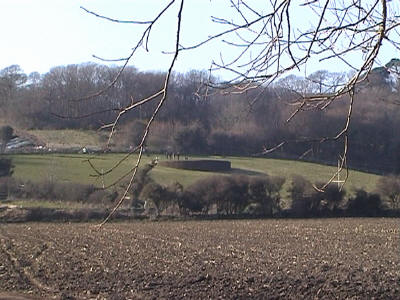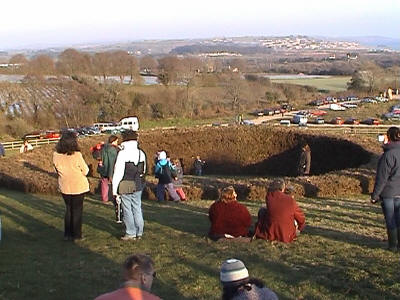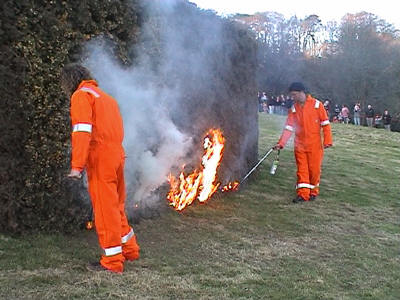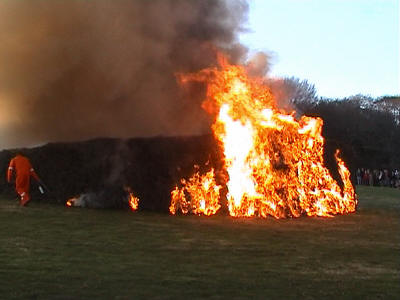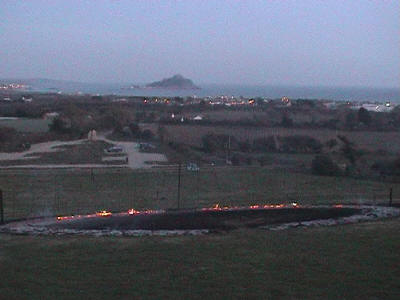 |
||
| home | features | exhibitions | interviews | profiles | webprojects | gazetteer | links | archive | forum | ||
|
|
||
|
CUT/STACK/BURN Bruce Davies Tremenheere Sculpture Park, Penzance, March 24th 2007
Bruce Davies had two spells at art school - most recently at University College Falmouth - and in-between times he worked for the National Trust. Employed in land management in the far West of Cornwall for around 9 years, he worked outdoors in all conditions in one of the most beautiful and ancient landscapes in the country. The intimate knowledge of rural traditions and skills that he developed during this time was recently translated into the art-work: CUT/STACK/BURN. Gorse, which is plentiful on the cliffs of Cornwall, is known as ‘furze’ when is dry, and is highly flammable. In the last century and before, this prickly shrub was cut during the summer and burned in the winter to provide heat for cooking and warmth. It was also used for warning beacons and the smelting of tin. CUT/STACK/BURN was an installation and performance event in which, over a period of several months, gorse gathered from a number of heathland sites was transported then stacked carefully in a field overlooking Mounts Bay, at Tremenheere Sculpture Gardens near Penzance. There it was left from winter 2006 to Spring 2007, where it dried out and turned from a deep glossy green to a coarse pale brown.
Arranged in a neat broken circle 15m in diameter, the furze created a cell-like enclosure: a half submerged room with a single entrance evocative, perhaps, of early Richard Serra. On the night of the burn visitors to the site were able to experience this sculptural tinderbox, and simultaneously watch the sun set over the bay. Whilst built into the hill, and therefore sympathetic to the undulating contours of the surrounding landscape, the top of its walls were level, and in-line with the flat plain of the sea beyond. As the sun disappeared behind the hill, Davies and National Trust warden Nigel Cook, dressed in flame-retardant boiler-suits, ceremonially lit the furze, and in a matter of seconds the entire work was alight: orange flames jumping 60 feet in the air. The audience, their faces warmed by the fire, clapped, and stayed to watch it burn down to a few embers that glowed intensely in response to gentle gusts of wind. Eventually all that was left was a zen-like circle of ashes and charred ground on the hillside.
Davies’ event had a quasi-ritualistic quality which partly served to mark the arrival of British summertime. In this sense the circle perhaps referred to cyclical processes of natural change. Certainly as a transient artwork it was, like a flower, predicated on the drama and inevitability of its own birth, growth and death. CUT/STACK/BURN also seemed to comment on contemporary forms of energy usage. In becoming reliant on central heating delivered to our homes by anonymous corporate suppliers, perhaps we have become rather complacent and unquestioning consumers of that resource.
Bruce is a member of the forum and left a number of posts during the development of this work. He has his own blog too www.cut-stack-burn.blogspot.com Tremenheere Sculpture Garden has been used as a venue for events since James Turrell made a sky-box at the time of the eclipse in 1999. It is only occasionally open to the public at the moment, but there are plans to make it more permanently open. More on the forum re this.
|
||
